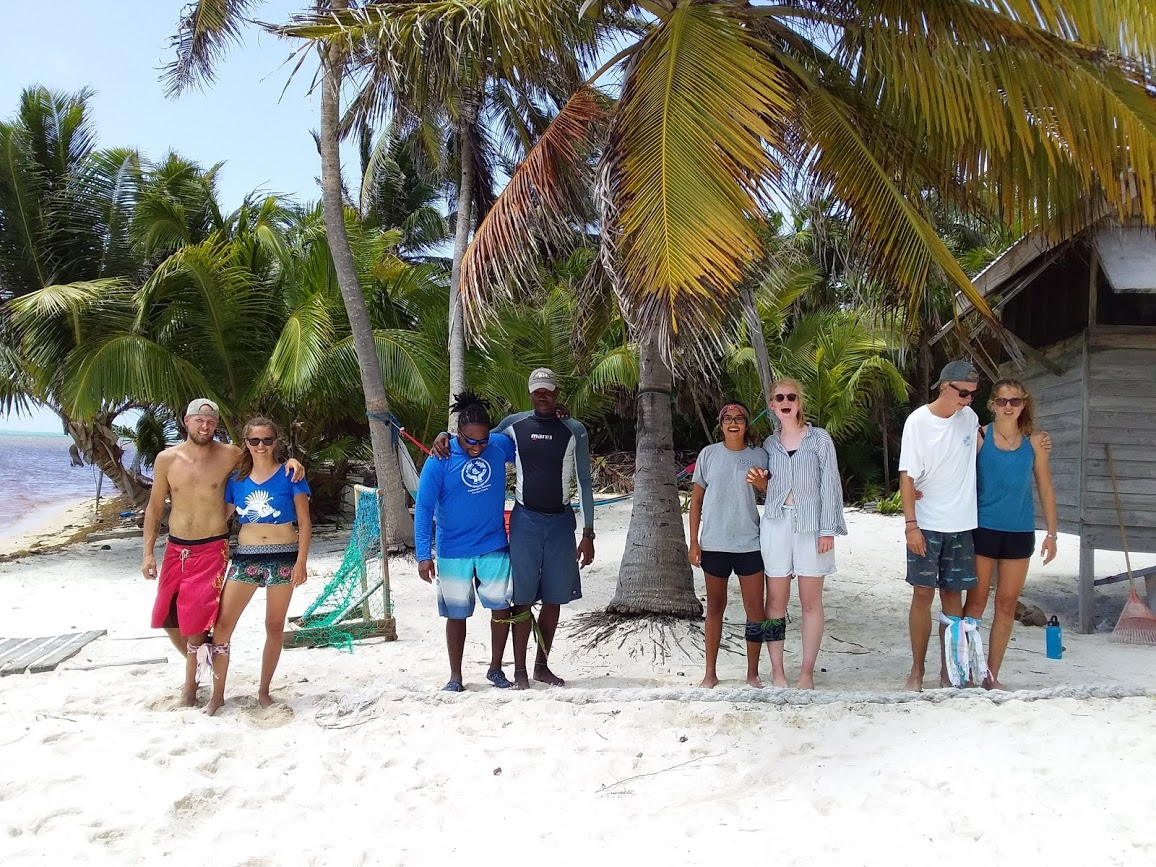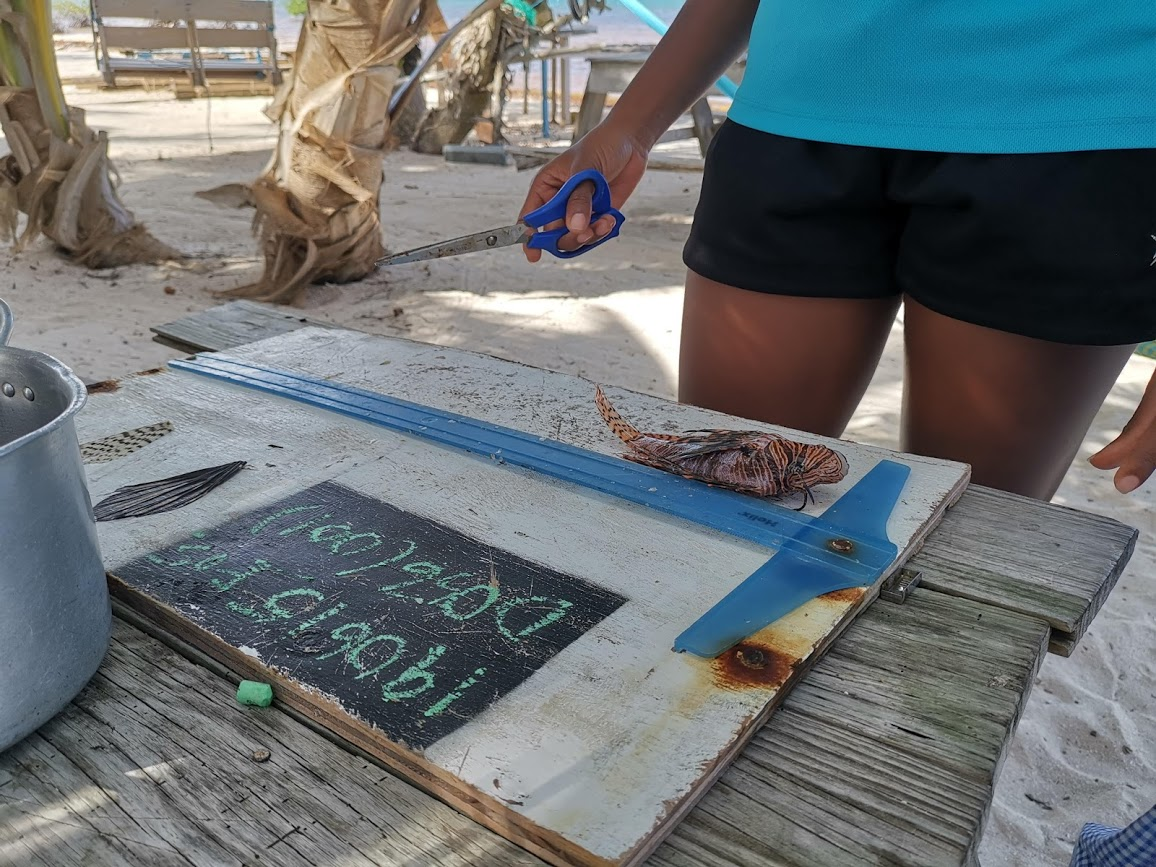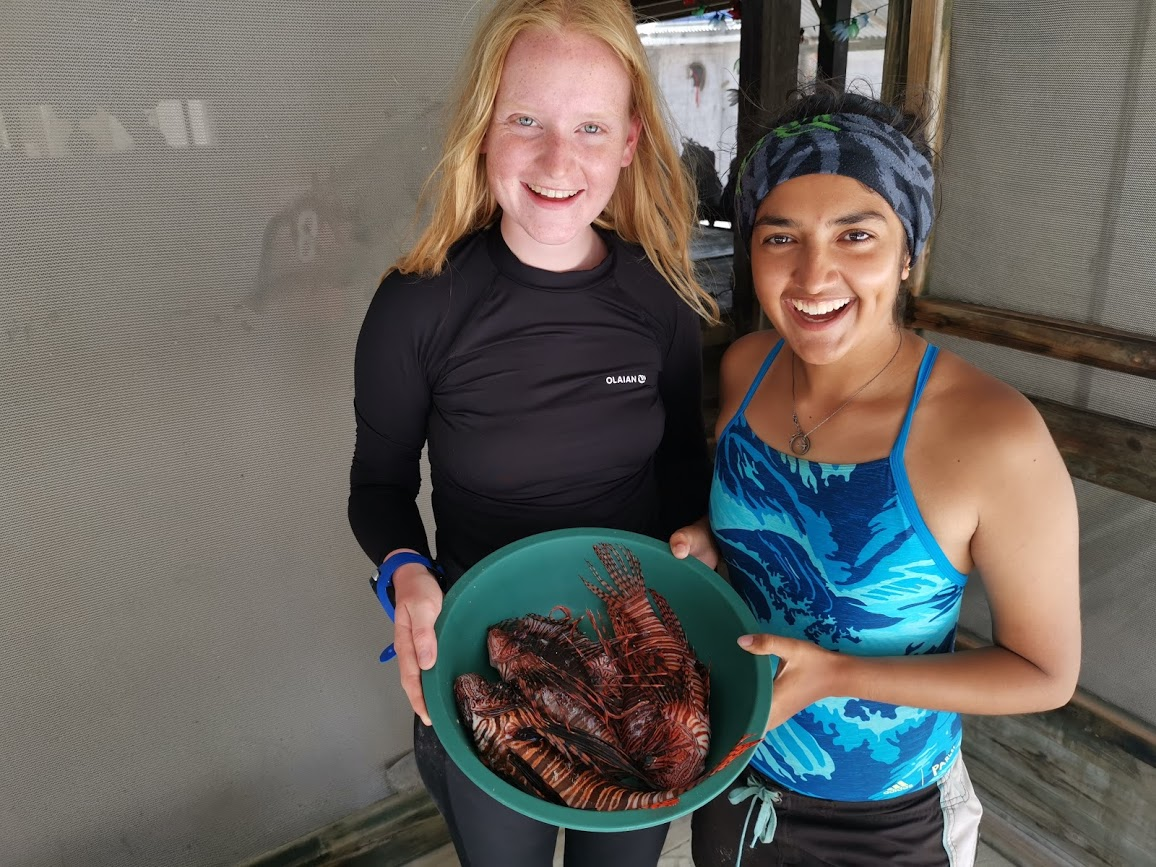Lionfish and Coral Reefs: Volunteering at a Marine Reserve
Last May, I volunteered in Belize on a marine reserve called the Bacalar Chico Marine Reserve (BCMR) with Blue Ventures, a science-led social enterprise that aims to build sustaining, locally-led marine conservation. I was part of a group of 9 volunteers from the UK, the US, Canada, and Switzerland who all have a passion for marine life.
We first stayed in Sarteneja, a small fishing village in the north of the country for 9 days whilst we completed our science training, living in homestays with local families. This gave us the chance to learn more about the local way of life through learning some Spanish and cooking Belizean dishes. We also got the chance to visit some local charities; like Shipstern Conservation and Management Area (owned by Corozal Sustainable Future Initiative) that protects several types of forests for local flora and fauna, as well as Wildtracks who rescue, rehabilitate and reintroduce manatees and primates. Both charities are doing amazing work and it was heartbreaking to see a baby manatee that had been rescued after being orphaned.
When we weren’t visiting other charities, we were completing the science training that would allow us to carry out surveys on the reef. I was put into the benthic group – which meant learning how to ID around 50 species of coral and algae. This proved difficult at first because all the corals are various shades of yellow and brown! To overcome this, we came up with funny sayings based on the name of the coral and the shape of them. An example of this would be ‘I want MAUR Cheetos’ for yellow finger coral or Madracis auretenra (MAUR is an abbreviation of the first letters of each part of the binomial Latin name) (Fig. 1). Meanwhile, the other group were learning how to ID around 60 species of fish.
Figure 1: Madracis auretenra (yellow finger coral), which looks similar to Cheetos. Credit: Nhobgood Nick Hobgood / CC BY-SA (https://creativecommons.org/licenses/by-sa/3.0)
We also had to learn to ID the various species of megafauna that we might get to see on our dives, such as dolphins, manatees, sharks, turtles, and rays. This came in useful on our two-hour boat journey to the dive camp where we would be staying for the next five weeks when we were treated to a display by some bottlenose dolphins. Whilst the dive camp was very basic, with no phone signal, running water and limited electricity generated by some new solar panels, we came up with our own ways to entertain ourselves like coconut bowling, The Coconut Olympics (Fig. 2) and building a raft. We had a busy dive schedule though, so our time for games was limited!
Figure 2: ‘Three-Legged Race’ on the beach as part of The Coconut Olympics, with special guests from the Fisheries Department. Credit: Jennifer Hollstein
The training we had taken, which involved numerous tests to check our knowledge, allowed us to carry out monitoring of the second largest coral reef system in the world – The Mesoamerican Barrier Reef System. Our dive surveys of fish and coral followed the Mesoamerican Barrier Reef System Synoptic Monitoring Program protocol which is used in all the countries with access to the reef. This means that even though many different groups are collecting data about the reef, the results can be meaningfully compared, as everyone is using the same methodology and protocols. This monitoring therefore allows scientists to monitor biodiversity along the reef as well as assessing bleaching events.
We also completed other surveys of conch (Fig, 3) and lobster to help determine the fishing seasons in collaboration with the Fisheries Department, as well as the impacts of marine reserves. Belize is one of the world’s leading countries in ecosystem management to help improve fish stocks and restore natural species diversity. They have done this by splitting the reef into several areas, some of which allow for fishing whilst others are no-take zones.
Figure 3: Dive team completing a conch survey. Credit: Valerie Romann
The other important project we were involved in was lionfish culls. Lionfish (Fig. 4) are native to the Indo-Pacific, but an invasive species in the west Atlantic, Caribbean Sea, and the Mediterranean Sea. We routinely tried to remove as many as possible because of their feeding and reproductive habits. Lionfish feed mainly on small fish, invertebrates, and molluscs, and particularly the juveniles, preventing these species from reaching maturity to help increase their numbers on the reef. Additionally, lionfish reach sexual maturity in less than a year and can spawn extremely frequently producing as many as two million eggs a year. Whilst there are predators of lionfish in their native range, there are none in their invasive range, which is why they cause such devastating impacts to local marine populations.
We always assessed our catches (Fig. 5) by taking their weight, length, and sex before dissecting to identify any species that they had eaten. In one lionfish we saw a baby lobster! However, lionfish have venomous fin rays, which we had to remove before handling. Blue Ventures has helped to set up a market for Lionfish in Belize by encouraging locals to eat the delicious fish, as well as fishermen to catch them. They have also helped empower local women by educating them on safe-handling practices of lionfish which has allowed them to make jewelry from the fins that would otherwise go to waste. We had a workshop with some of the ladies from Belioness that helped us make our own pieces. This has helped empower and unite the women with new job opportunities and skills.
Figure 4: Examining the lionfish caught during the day. Credit: Lizzie Bourn
Figure 5: Fellow volunteer Jemima and I with our lionfish catch for the day. Credit: Lizzie Bourn
Towards the end of the trip, we discovered a new disease that was affecting certain species of coral. This disease (Stony Coral Tissue Loss Disease) was slowly working its way down the barrier reef from Florida where it was first discovered in 2014. It is believed that it is caused by a bacterial pathogen that is being spread through water movement, potentially increased by the spread of Sargassum. The other implications of Sargassum include the deoxygenation and increased temperature of shallow water where the seaweed collects, causing the death of many marine species and decreased tourism due to the smell and look of the water. These impacts of a proliferation in Sargassum are thought to be from agricultural fertilisers and wastewater from the Amazon.
Figure 6: Loading up the boat with equipment for dives. Credit: Lizzie Bourn.
How I Got Involved and How You Can Help (From Home!)
I got involved with Blue Ventures after I learned how to SCUBA dive in the summer of 2018. Having always been aware of the threat of invasive species and the need to protect the environment, due to spending a lot of time in New Zealand where my mother is from, I wanted to put my skills towards something beneficial. This opportunity seemed a great fit to allow me to further my diving abilities, learn more about marine biology and conservation as well as aiding in community-led projects.
If you want to get involved with something similar, or are sitting at home bored, there are various citizen science projects that you can get involved in. Virtual Reef Diver allows you to classify hard and soft corals. This data is then combined with professional monitoring data to create better predictive maps of coral cover on the Great Barrier Reef. There are also projects on Zooniverse where you can help scientists understand kelp forests or identify and classify manatee calls.







